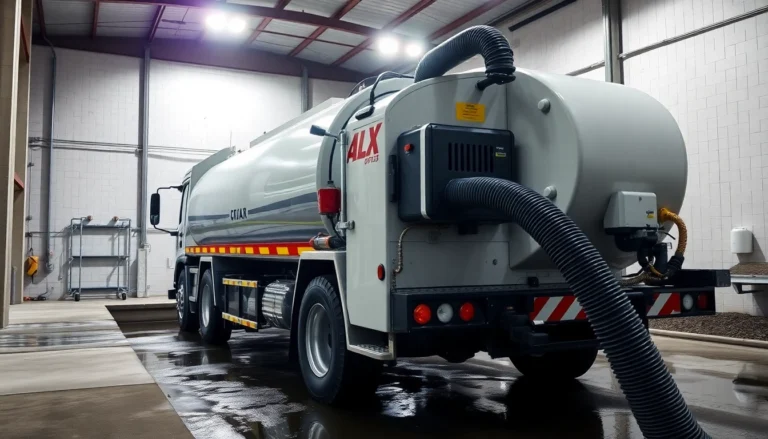
Maximizing Construction Efficiency with Equipment Rental: A Comprehensive Guide for UK Contractors
In the dynamic world of construction, efficiency and flexibility are paramount for completing projects on time, within budget, and to the highest standards. One of the most strategic decisions contractors make is choosing between purchasing equipment or leveraging the advantages offered by construction equipment rental. As the UK construction industry continues to evolve, rental solutions have emerged as a cost-effective, versatile, and innovative approach to meet diverse project needs. This comprehensive guide delves into the benefits of equipment rental, the latest trends, and practical techniques for integrating rental services into your construction projects for maximum ROI and operational excellence.
Understanding Construction Equipment Rental: Benefits & Key Features
Why Choose Equipment Rental Over Buying?
Deciding whether to buy or rent construction equipment can significantly impact project outcomes and financial performance. Traditionally, many companies historically invested heavily in purchasing machinery, aiming for long-term asset ownership. However, the modern construction landscape favors rental for several compelling reasons:
- Cost Efficiency & Cash Flow Optimization: Renting eliminates large upfront capital expenditures. Contractors pay only for the equipment during usage, converting capex into opex, which improves cash flow management especially for short-term or fluctuating projects.
- Access to the Latest Technology: Construction equipment rapidly advances, and rental companies continually update their fleets with the newest, most technologically advanced machinery. This ensures safety, efficiency, and environmental compliance without additional investment.
- Flexibility & Scalability: Projects vary in size and scope. Rental provides scalability, allowing firms to adjust equipment inventory based on current needs without burdening their balance sheets.
- Reduced Maintenance & Storage Burdens: Rental providers assume maintenance, servicing, and storage responsibilities, freeing up resources and reducing downtime risk caused by equipment failure.
- Mitigation of Obsolescence & Resale Risks: Equipment depreciates over time. Renting transfers the obsolescence risk to the rental company, ensuring operations use equipment that meets safety and efficiency standards.
In essence, equipment rental aligns with the agile, project-focused mindset prevalent in today’s construction industry, providing operational flexibility and financial prudence.
Types of Construction Machinery Available for Rent
The UK rental market offers an extensive array of construction machinery tailored to every phase of building projects. These include:
- Earthmoving Equipment: Excavators, bulldozers, dumpers, and wheel loaders facilitate site preparation and material handling.
- Compaction Machinery: Plate compactors, rammers, rollers, and vibratory machines ensure proper soil compaction for foundations and pavements.
- Lifting & Access Equipment: Tower cranes, mobile scaffolds, cherry pickers, and aerial work platforms provide safe heights for diverse construction activities.
- Concrete Equipment: Mixers, power floats, vibrators, and poker tools support concrete pouring and finishing tasks.
- Power Tools & Handheld Machinery: Drills, breakers, saws, and grinders offer flexibility in detailed or demolition work.
- Specialized equipment such as laser scanning devices, surveying tools, and dust extractors are also available for high-precision and quality control tasks.
Choosing the right machinery hinges on project scope, site conditions, and specific technical requirements, emphasizing the value of working with a knowledgeable rental provider.
Core Features and Benefits for Construction Firms
Contractors selecting rental services gain numerous core advantages, including:
- Operational Flexibility: Quick scaling of equipment inventory to match project phases and unforeseen changes.
- Maintenance & Servicing: Comprehensive support packages encompass preventative maintenance, repairs, and emergency breakdown services.
- Safety & Compliance: Equipment standards are regularly inspected and certified, minimizing safety hazards and legal risks.
- Environmental Sustainability: Rental companies increasingly offer eco-efficient models, supporting greener construction practices.
- Cost Transparency & Budget Control: Clear rental agreements, often with flexible billing cycles, help in accurate cost forecasting.
This suite of benefits makes equipment rental a strategic asset for modern contractors aiming for operational excellence and competitive advantage.
Selecting the Right Construction Equipment Rental Provider
How to Evaluate Rental Companies & Their Offerings
Choosing a dependable rental provider is critical. Consider the following criteria:
- Fleet Quality & Diversity: Confirm the provider maintains a modern, extensive fleet aligning with project requirements.
- Reputation & Customer Feedback: Seek reviews, references, and case studies that demonstrate reliability and customer satisfaction.
- Coverage & Accessibility: Ensure the company provides prompt delivery, pickup, and flexible service options across your project sites.
- Support & Service Excellence: Evaluate the availability of experienced technical support, maintenance, and emergency troubleshooting.
- Pricing Transparency & Contract Terms: Review rental rates, penalties, and rental terms to ensure clarity and fairness.
Partnering with established, well-reviewed providers like RentMas ensures quality assurance and peace of mind throughout your project lifecycle.
Questions to Ask Before Rental Agreements
Prior to signing a rental contract, contractors should ask:
- What is included in the rental price — maintenance, delivery, setup, and collection?
- What safety certifications and standards does the equipment meet?
- How responsive is the support team in case of breakdowns or emergencies?
- Are there any restrictions or conditions on equipment use, including training or operator requirements?
- What are the rental terms regarding insurance, damages, and liability?
- Can the provider accommodate last-minute changes or extensions?
Clear communication upfront minimizes risks and delays during project execution.
Ensuring Quality, Safety, and Compliance
Sustaining high safety standards is non-negotiable. Key practices include:
- Verifying equipment certification and recent inspection reports.
- Ensuring operators are trained or certified, especially for complex machinery.
- Adopting strict site safety protocols aligned with UK regulations and health & safety regulations.
- Maintaining detailed logs of equipment usage, inspections, and maintenance.
- Working with providers committed to sustainable practices and eco-friendly equipment options.
Regular audits and compliance checks are essential to safeguard workers, minimize legal liabilities, and uphold project reputation.
Implementing Construction Equipment Rental in Your Projects
Planning Equipment Needs and Timelines
Effective project planning begins with detailed assessment of equipment requirements, considering:
- Project phases — initial site clearance, foundation work, superstructure, finishing.
- Duration — short-term vs. long-term rental strategies.
- Peak demand periods — ensuring availability during critical phases.
- Specialized tasks requiring unique machinery, e.g., precision excavation or heavy lifting.
Collaborating with your rental partner facilitates accurate forecasting and minimizes idle or underutilized assets.
Streamlining Delivery, Setup, and Maintenance
Operational efficiency requires well-coordinated logistics. Actions include:
- Scheduling timely delivery and pickup in alignment with project milestones.
- Ensuring proper setup and operator training where necessary.
- Implementing routine maintenance schedules, often handled by the rental provider.
- Establishing communication channels for prompt support during downtime or operational issues.
Many rental companies offer integrated services that simplify setup, including on-site support, reducing delays and safety hazards.
Optimizing Costs and Project Efficiency
Focus on cost control through:
- Aligning equipment rental with precise project phases to prevent over- or under-utilization.
- Leveraging multi-asset packages or long-term rental discounts.
- Monitoring utilization rates and performance metrics regularly.
- Implementing data-driven decision-making to adjust asset deployment dynamically.
Additionally, adopting digital asset management tools can enhance fleet visibility, maintenance scheduling, and overall project coordination.
Maximizing ROI with Construction Equipment Rentals
Tracking Performance and Productivity Metrics
Quantitative evaluation of rental investments involves monitoring:
- Operational uptime and downtime statistics.
- Work progress relative to equipment productivity.
- Cost per unit of output or milestone achieved.
- Incident and safety reports related to equipment use.
Leveraging data analytics helps identify bottlenecks, optimize resource allocation, and improve future project planning.
Case Studies: Successful Rental Implementations
For instance, a mid-sized UK residential builder partnered with a rental provider to supply excavators, loaders, and finishing tools for a complex apartment development. By renting high-end, specialized machinery and aligning delivery with project phases, they reduced equipment downtime by 25% and cut operational costs by 15%. Notably, proactive maintenance agreements prevented costly breakdowns, ensuring project timelines were met seamlessly.
Another case involved infrastructure contractors utilizing long-term rentals of large-scale rollers and compactors for an extensive highway reconstruction project. The flexibility in rental terms allowed them to respond swiftly to site changes, leading to a 20% efficiency gain and significant savings in equipment ownership costs.
Advanced Tips for Long-Term Rental Strategies
Developing a sustainable long-term rental plan includes:
- Negotiating favorable terms such as extended rental discounts or maintenance packages.
- Integrating rental data into overall project management tools for real-time visibility.
- Building strong relationships with rental providers for priority access and dedicated support.
- Continuously evaluating equipment performance to optimize asset utilization.
Such strategic approaches maximize ROI, reduce lifecycle costs, and promote consistent project success.
The Future of Construction Equipment Rental in the UK
Innovations and Technological Advancements
Emerging trends include the integration of telematics, IoT, and analytics to improve equipment monitoring, predictive maintenance, and operational transparency. Electric and hybrid machinery are gaining prominence, aligning with UK’s commitments to sustainability and carbon reduction targets.
Furthermore, advancements in remote operation and automation promise to reduce workforce exposure and enhance precision, delivering safer, faster, and more efficient construction processes.
Sustaining Growth with Eco-Friendly Equipment
The industry is shifting toward greener practices, with rental fleets increasingly offering low-emission models. These include electric-powered excavators, hybrid compactors, and green-powered lighting and auxiliary equipment, supporting contractors’ sustainability targets while complying with evolving regulations.
Adopting eco-friendly equipment can also lead to cost savings on energy consumption and reduce carbon footprints, providing competitive advantages and meeting corporate social responsibility objectives.
Market Trends and Opportunities for Contractors
The UK rental market is projected to grow robustly as contractors seek agile, cost-effective solutions amid uncertainties and project complexity. Opportunities include expanding rental portfolios, integrating digital management tools, and embracing innovative rental models such as shared assets or peer-to-peer platforms.
Overall, embracing technological change and sustainability initiatives positions contractors to capitalize on emerging market demands and stay ahead in a competitive industry.






